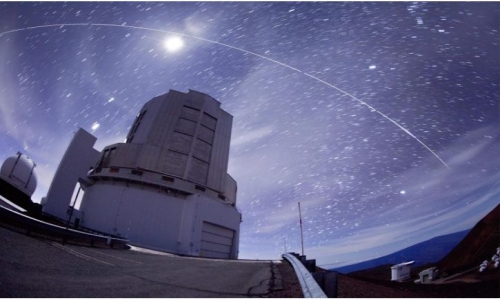


 3:55:26
3:55:26  2023-08-22
2023-08-22  743
743

The universe may be twice as old as current estimates, according to a new study that sheds light on "impossible early galaxies" spotted by the James Webb Space Telescope that appear to be in a state of advanced development.
For years, many astrophysicists have expressed their bewilderment about these early galaxies that came into existence only 300-400 million years or so after the Big Bang, but appear to have a level of maturity and mass typically associated with billions of years of cosmic evolution.
Moreover, they are surprisingly small, which adds another layer of mystery to the equation.
The new study, published last week in Monthly Notices of the Royal Astronomical Society, provides a new explanation for the advanced level of evolution and mass observed in these ancient galaxies.
Until now, physicists have calculated the age of the universe by measuring the time since the Big Bang, by studying the oldest stars and estimating the rate at which they are moving away, which indicates how fast the universe is expanding.
This is calculated on the basis of the shift of light from distant galaxies toward the longer red wavelength due to the expansion of the universe, a phenomenon similar to how the frequency of sound changes if the source is moving and the observer is stationary. Meaning that when an ambulance approaches you, for example, you hear its whistle at a higher frequency than the sound frequency you hear after it passes in front of you and moves away from you.
In this way, the 2021 estimate for the age of the universe puts it at 13.797 billion years.
But Professor Rajendra Gupta of the University of Ottawa in Canada said this redshift could be a hybrid phenomenon, and not just due to the expansion of the universe.
The astrophysicist explained: "Our newly invented model extends the time of galaxy formation by several billion years, which makes the age of the universe 26.7 billion years, not 13.7 as previously estimated."
The new model suggests that the formation time frame for the early galaxies observed by the James Webb telescope at high redshifts could extend from a few hundred million years to several billion years.
This new theory offers a new explanation for the advanced level of mass and evolution observed in the strange early galaxies.
Reality Of Islam |
|

Cameras hav

For years,

New scienti

This is the
 9:3:43
9:3:43
 2018-11-05
2018-11-05
10 benefits of Marriage in Islam
 7:5:22
7:5:22
 2019-04-08
2019-04-08
benefits of reciting surat yunus, hud &
 9:45:7
9:45:7
 2018-12-24
2018-12-24
advantages & disadvantages of divorce
 11:35:12
11:35:12
 2018-06-10
2018-06-10
 6:0:51
6:0:51
 2018-10-16
2018-10-16
 4:2:19
4:2:19
 2022-10-10
2022-10-10
allah will not answer all your prayers
 6:56:28
6:56:28
 2022-01-01
2022-01-01
 1:34:8
1:34:8
 2022-02-01
2022-02-01
 8:19:41
8:19:41
 2018-06-21
2018-06-21
 6:14:17
6:14:17
 2018-06-21
2018-06-21
 7:32:24
7:32:24
 2022-02-14
2022-02-14
 3:43:50
3:43:50
 2022-11-05
2022-11-05
 5:41:46
5:41:46
 2023-03-18
2023-03-18
| LATEST |